Renewables Are Expanding on Indigenous Lands, Co-Ownership Offers a Solution
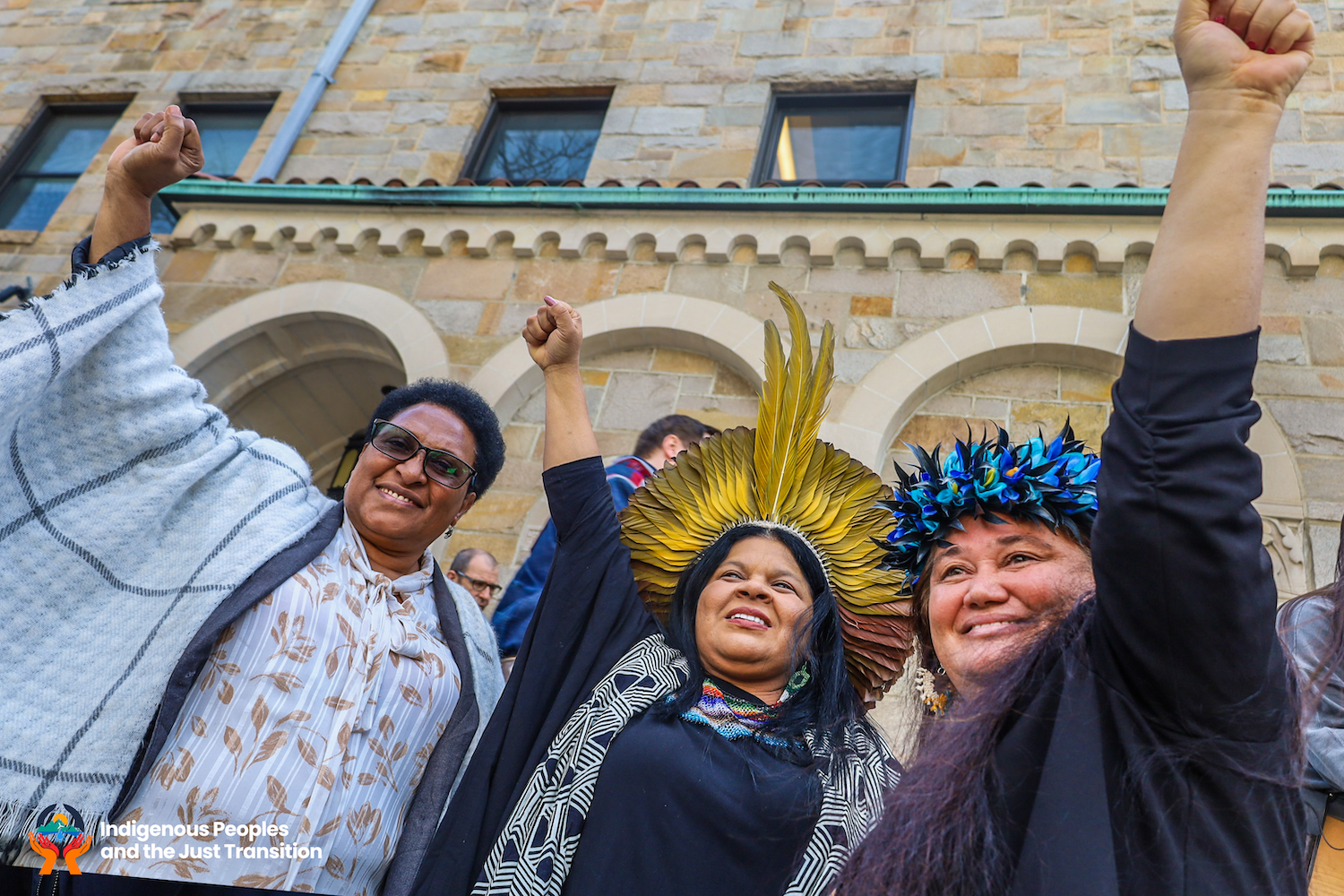
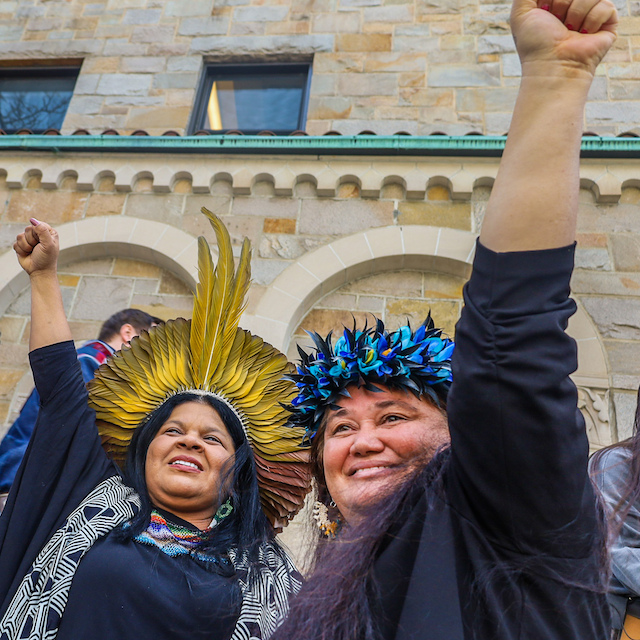
Attendees at the Indigenous Peoples and the Just Transition 2024 conference in New York, where Indigenous representatives from around the world discussed co-ownership models and partnerships. (Image courtesy of the Business and Human Rights Resource Center and Indigenous Peoples Rights International.)
A new report co-produced by the Business and Human Rights Resource Center and Indigenous Peoples Rights International calls for more Indigenous co-ownership in renewable energy projects.
The report highlights examples where co-ownership agreements between energy developers and Indigenous communities are established and shares the experiences of the parties involved. It also provides recommendations to governments, companies and Indigenous peoples, highlighting barriers and risks to co-ownership in renewable energy projects.
Why is co-ownership important?
“There is massive investment going into renewables and a lot of the same kind of problems that we see in other land-intensive industries, like fossil fuels, are being repeated in renewable energy,” said Ana Žbona, co-head of the civic freedoms and human rights defenders program at the Business and Human Rights Resource Center.
Indigenous peoples, who in large part have already been pushed to the margins of society, are again experiencing the wave of progress roll into their communities and pull their resources out to sea.
You may expect that from oil barons or the fever of a gold rush, but renewable energy is assumed to be different.
“Yes, this is an energy transition, but it’s also a systems transition,” Žbona said. “But with renewable energy companies, we aren’t seeing that. We’re seeing a lot of the business-as-usual, extractive approach.”
Energy developers and Indigenous communities sharing ownership of renewable projects can help address this issue.
“Co-ownership is recognizing the equity that Indigenous peoples have in a project,” said Alancay Morales Garro, business and human rights lead at Indigenous Peoples Rights International.
It’s important to emphasize that co-ownership does not imply free, prior and informed consent of a project from the community. Consent must still be obtained, regardless of ownership.
Co-ownership is proving to be good for business
The report notes that co-ownership models between Indigenous peoples and renewable energy projects are on the rise globally.
In Colombia, Greenwood Energy is developing a solar project on Arhuaco land, and 49 percent of the project is owned by the Arhuaco people. Greenwood had plans to build a transmission line. But after project discussions with the Arhuaco, the company learned that the proposed route for the line was not optimal and for reasons of cultural and environmental significance, the partners rerouted the transmission line. The decision reduced costs and created a more sustainable project.
In Canada, a company called Natural Forces has eight projects and 19 Indigenous partners. “Their sense is that those projects were successful because of those long-term relationships that they’ve built,” Žbona said.
Natural Forces has some projects where Indigenous communities have small, minority stakes and others where the communities own more than 50 percent of the project.
Companies that engage in co-ownership agreements with Indigenous nations receive a variety of benefits. The value of Indigenous knowledge of the land cannot be overstated.
“Indigenous peoples are very informed about how their territory works,” Žbona said. “When they are invested in a project, they will give the kind of advice that’s going to make the project work better.”
There is also less risk of a project being protested, suspended, canceled or challenged in court when an Indigenous community has an equity stake in the project.
A mining company in Northern Canada, Skeena Resources, that co-owns a mine with the Tahltan Central Government told TriplePundit that the practice of respect and relationship-building adds immense value to a project.
“It’s the ability to work closely with people around common goals and to share aspirations with each other,” said Justin Himmelright, senior vice president of external affairs at Skeena Resources. “Trust and respect build fantastic productive relationships when it comes to advancing projects and initiatives together.”
While changing the status quo can be difficult, companies agree it is well worth it in the long run.
“A big renewable energy company said, ‘Yeah, it is challenging learning a new way of doing things,’” Žbona said. “They said, ‘It means more upfront time investment, but ultimately we are showing that there is another approach, a different mentality here, and that makes us more competitive in the end.’”
Governments have to play a bigger role
For co-ownership agreements to thrive, companies and Indigenous communities need a regulatory framework that facilitates the agreements.
Canada is one country that is leading the way. The country’s regulatory framework recognizes Indigenous title to land and provides support to pursue co-ownership agreements.
“In Canada, there is legislation in place,” Žbona said. “There are even policies that allow for Indigenous peoples to have access to funding for these types of projects.”
In other regions, the lack of government recognition of Indigenous peoples makes it difficult for them to acquire an equity share in projects.
“In some places in Asia and Africa, where Indigenous peoples are not recognized, the state has all the power, and sometimes they exercise those powers wrongfully,” Morales Garro said. “The rights recognition of Indigenous peoples is a must.”
With greater rewards, comes greater risks
As investors know, having equity in a project or a company is not a risk-free venture. The report highlights some of the risks Indigenous communities face when considering ownership.
“If you have equity in a project, you have stakes on the table and there are risks associated with that,” Morales Garro said. “Projects can fail.”
If the governance of the project and the community’s funds are not adequately managed, it can also create internal divisions in the community.
And when communities move towards full ownership of a project, they need to ensure they have experts who can successfully manage the project.
“One Indigenous community said, ‘We have lots of lawyers, but we don’t have many engineers or technicians, and that’s a gap that will come up if we start pursuing these types of arrangements,’” Morales Garro said.
Given the increased demand for clean energy, co-ownership models offer a potential improvement over the conventional, sometimes combative, relationships that Indigenous peoples had with energy projects in the past. With the right procedures, this arrangement could be a win for all parties involved.
Sustainability Communicators Warned to Avoid ‘Implied Benefits’ to Stay Clear of Greenwashing Allegations
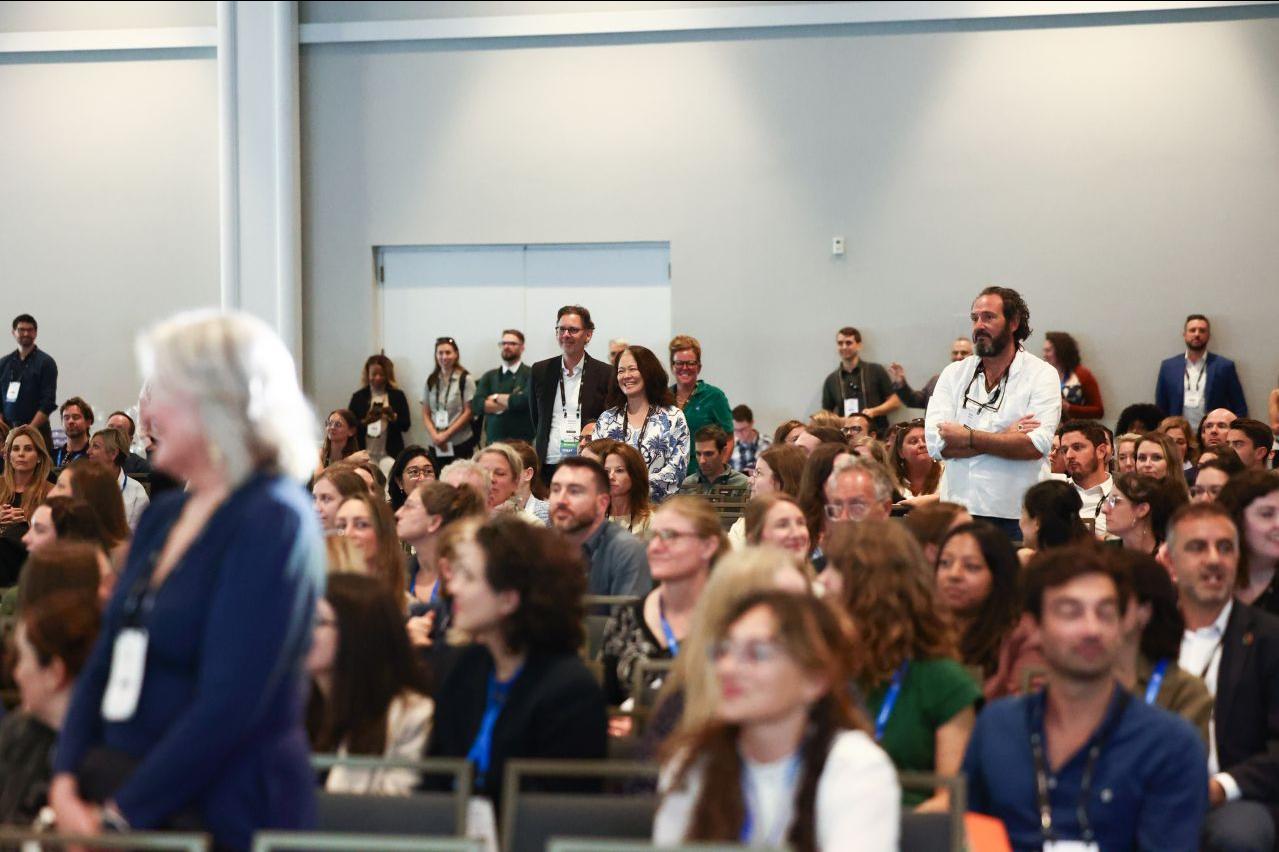
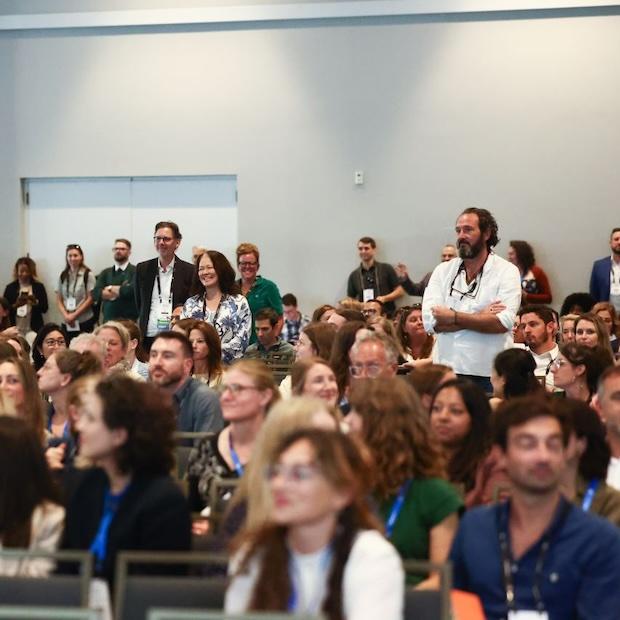
Attendees at day one of the 2024 Sustainable Brands conference in San Diego. (Image: Sustainable Brands)
The fundamentals of advertising and marketing that were taught in university classrooms for decades are flawed and could result in a lawsuit in today’s era of greenwashing, says veteran sustainability communications counselor Suzanne Shelton.
Brands that are committed to being good stewards of the environment need to tell their stories rather than greenhushing, but the messaging must be accurate.
“You will be cooler, sexier, happier … smarter if only you will buy this product or service. That is how traditional advertising works. It is all about implied benefits,” Shelton, senior partner at ERM Shelton, told attendees at the annual Sustainable Brands conference in San Diego this week. “But when you apply that same approach to sustainability, that’s when you end up in court.”
A vocal advocate for brand storytelling on sustainability topics, Shelton’s appearance came at a perilous time for corporate communications professionals tasked with bolstering reputation with consumers, investors, employees and other key stakeholders. Regulators have sued brands in both the United States and Europe, accusing them of intentionally making misleading claims over the sustainability of products and services.
So far in in 2024, 20 airlines have been taken to task by European regulators for overstating the percentage of sustainable aviation fuel used by their fleets, and for not using clear enough language over purchasing carbon offsets. A beverage maker was the subject of a U.S. Securities and Exchange Commission settlement over the recyclability of plastic coffee pods. And the California attorney general sued an oil giant for claiming plastic recycling programs are ubiquitous when waste is more often sent to landfills or incinerators.
The rewards for companies deemed to be more climate-friendly are huge.
The $44 Billion Sustainability Opportunity for Brands, a report by Glow, TriplePundit and 3BL, estimates that U.S. brands could capture $44 billion in additional revenue by offering more sustainable products. The report was released in March 2024, following a survey of 3,000 US adults in November 2023. The survey found that 87 percent of consumers consider it important for businesses to act responsibly toward the environment and society.
The report estimates that more than $9 billion of U.S. consumer spending on food and groceries will move away from brands with a poor sustainability reputation and toward brands that are perceived as leaders.
At Sustainable Brands, Shelton referenced her firm’s own Global Eco Pulse research that revealed 80 percent of respondents have an improved opinion of a company that is reducing greenhouse gas emissions. Conversely, just 8 percent say they view a company negatively for cutting emissions.
“I think I can make a blanket statement that may not be our target audience,” she said, tongue planted firmly in her cheek.
The veteran agency owner urged attendees to ensure that their corporate “ESG house is in order” and that they are communicating on topics like recyclability and the third-party certifications on which their companies rely.
On the topic of greenwashing, Shelton said 29 percent of consumers are “savvy spotters” who are educated in identifying glorified climate claims and willing to call out bad actors.
“These are people that are actively working to put their wallets where their values are,” she said. “So, 29 percent of the population out there, if you greenwash, they’ll put you on the bad list and it'll be really hard to get off.”
Even brands working to save the planet and accurately communicating about progress can make improvements, Shelton maintained.
“Have you ever seen copy that talks about sustainability being something for future generations?” she asked. “Next time you see that in your organization, I want you to get a red pen and cross through it.
“Who the hell are those people?" she continued. “They're just like some future people, but my kids, my grandkids, like that's personal. These are people that I've been up for every day, sworn to protect and love.”
New Tech Prepares Energy Storage Companies For Sodium-Ion Batteries
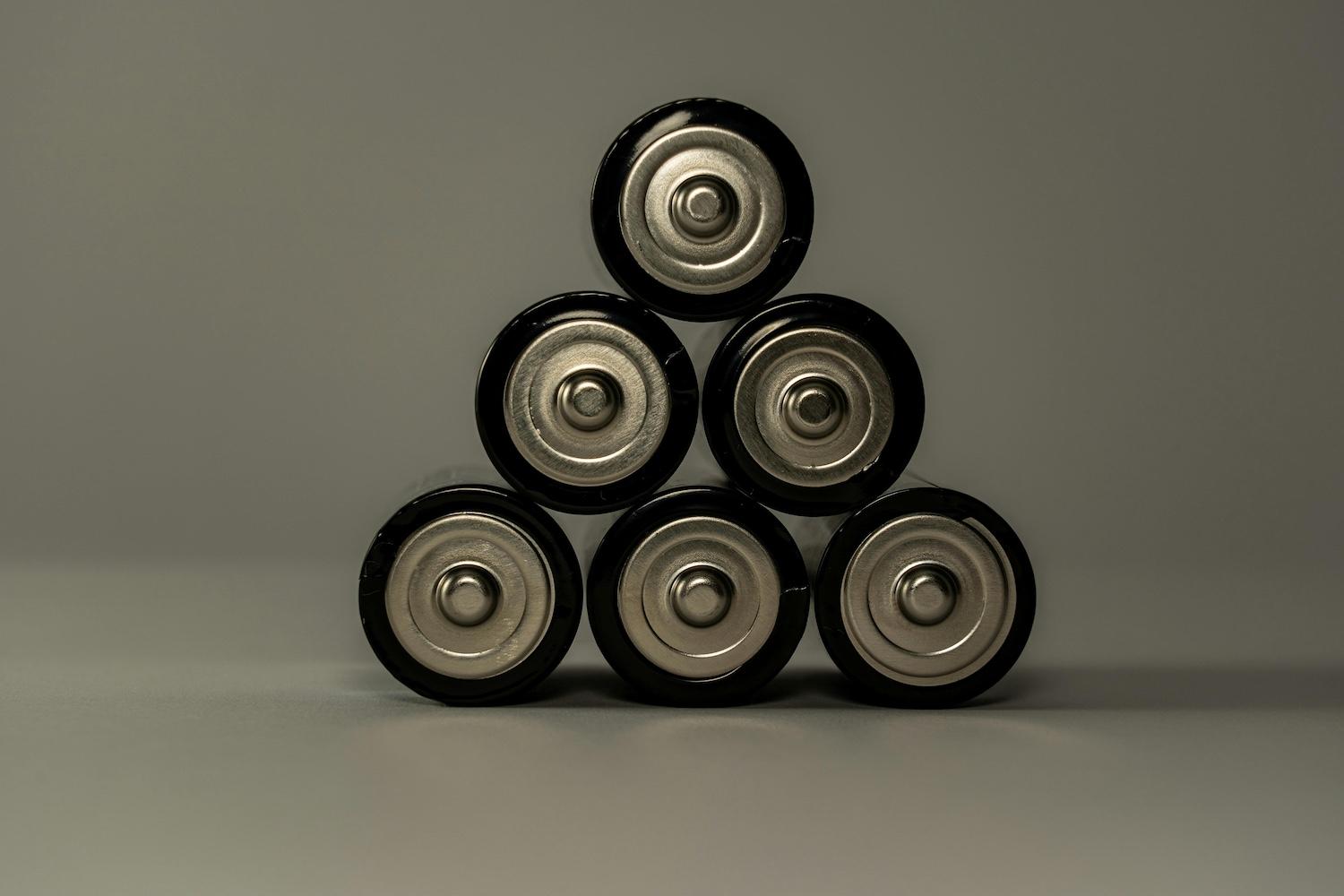

(Image: Castorly Stock/Pexels)
A successful energy transition hinges on batteries capable of storing renewable energy for use when it can’t be generated. While lithium-ion technology is the current the gold standard for batteries, alternatives are needed. New technology promises to help energy storage operators evaluate the suitability of sodium-ion batteries and plan accordingly.
“Sodium-ion batteries are a promising alternative to lithium-ion batteries, primarily because of the difference in raw materials,” said Juan Ramos Zayas, engineering manager at the battery analytics software company Twaice. “Sodium is available in significantly higher abundance than lithium. And sodium mining and refining are more environmentally sustainable, compared to lithium mining.”
Most of the materials used to create storage for renewable energy are not themselves renewable. Many of the extraction processes for lithium and cobalt — which is also needed for lithium-ion batteries — cause varying degrees of environmental and social harm, including environmental degradation, pollution and monopolization of water resources, displacement of Indigenous peoples, and widespread death and ecological destruction in the cobalt-rich Democratic Republic of the Congo.
On the other hand, sodium is plentiful in the natural environment and is considered a renewable resource. And sodium-ion batteries generally don’t require cobalt or other critical materials, Zayas said.
“There may be further advantages in terms of service life, costs, safety and performance,” he said. “However, the industry is still in the early stages of standardizing the materials required for sodium-ion, and we will have to wait before we can draw any concrete conclusions.”
This doesn’t mean sodium-ion batteries will eventually replace lithium-based batteries, especially where higher energy density is needed. By their very nature, sodium-ion batteries have a lower capacity for energy density, Zayas said.
While that might make them less than ideal for long-range electric vehicles, they are effective for a variety of uses, including storing renewable energy at scale.
But energy storage operators need information about how these batteries age to plan their implementation and manage energy systems. Twaice already offers software that simulates the aging of lithium-ion batteries to help operators learn that information.
By further developing its simulation models to work with sodium-ion batteries, the company will help operators understand how they behave and age, too, Zayas said. This is the first model of its kind to work with non-lithium batteries, and it will help determine the suitability of sodium-ion batteries for specific projects and optimize their use without oversizing their storage.
“Our simulation models provide a fundamental understanding of sodium-ion battery aging under varying operating conditions,” Zayas said. “So far, we are seeing that sodium-ion batteries degrade generally similar to lithium-ion batteries, and that we can transfer a lot of methods we use for lithium-ion battery modeling. Moreover, the cells we have tested show a promising lifetime, indicating a high potential of sodium-ion batteries to be deployed for different applications.”
There are, of course, limitations to the simulation. The information gleaned from the models is generally only valid for the conditions within the company’s Battery Research Center, where the testing takes place, Zayas said. But Twaice uses its battery expertise, artificial intelligence, and machine learning to estimate how they will perform in other conditions as accurately as possible.
Integrating sodium-ion batteries into energy storage systems offers a better option for the environment and communities near mines. But such alternative options are also necessary to meet the exponential growth in demand for batteries caused by the energy transition. Reliable models for understanding how these batteries degrade and behave are integral to making that happen, and they will likely become more so with the standardization and increased use of sodium-ion.
Editor's note: A previous version of this story attributed emailed responses from Twaice to Alexander Karger, battery and machine learning engineer. We regret the error.
How "The More You Know" Campaign Stays Relevant 35 Years Later


(Image courtesy of NBCUniversal.)
Leadership at NBCUniversal believes its "The More You Know" series of public service announcements (PSAs) lasted 35 years because it keeps pace with changing times, pays attention to important social issues, and adjusts to a communications environment that’s vastly different from when the series began.
“We attribute the longevity of 'The More You Know' (TMYK) to the recognizable and trusted faces who address timely issues and offer actionable tips people can use to improve their daily lives and the world we all live in together,” Marie Dilemani, senior director of marketing and communications for NBCUniversal, told TriplePundit in an email. “This ethos is something that transcends eras and fads.”
The Peabody Award-winning series began in 1989 featuring personalities from various NBC shows. News anchor Tom Brokaw was the first to appear in the series, which succeeded another PSA campaign that ran from 1983 to 1989.
“We use TMYK as a messaging vehicle during consequential moments, and that’s what resonates,” Dilemani said. “If TMYK wasn’t the most well-known and impactful PSA campaign, I don’t think it would still be here at 35, let alone feature the people we’ve seen continue to enthusiastically participate.”
The series has featured a broad range of guests during its run, including celebrities, television hosts and United States presidents. Former Presidents George H. W. Bush and Barack Obama encouraged parents to be more involved in their children's education and former First Lady Michelle Obama worked to promote the prevention of childhood obesity.
The latest campaign includes celebrities Cynthia Erivo and Ariana Grande, stars of the upcoming film, “Wicked.” The messages are strengthened by the roster of talent who participate in the campaign, Dilemani said.
“Whenever we have the opportunity to collaborate with talent, we want them to speak on topics that are meaningful to them,” Dilemani said. “In the case of Ariana and Cynthia, we looked at the themes of ‘Wicked’ and recognized we could inspire our audiences to cultivate sisterhood with the women in their lives by checking in on them … ‘Wicked’ is already having such a strong hand in the cultural zeitgeist, and it’s not even out yet, so our social impact message will benefit from the buzz. And thanks to its acclaimed history, TMYK can do its own part to fuel that buzz. It’s a win-win.”
The core values of the campaign are uniform across all platforms, Dilemani said. But the company pays close attention to the video style and messages it focuses on for social media because it sees a significant opportunity to engage with younger viewers who may not be as familiar with the campaign there.
“We address topics that are top of mind for them, like mental health and the importance of finding a mentor, and we do so in ways that feel organic to social media,” Dilemani said. “Instead of scripting talent, we ask them a question on a topic and invite them to answer in a genuine way by sharing personal anecdotes.”
Beyond adapting to social media, the advent of streaming services, like the company’s Peacock platform, presented another opportunity to evolve, she said.
“When Peacock launched, we could publish longer pieces, and as a result, the conversation series was born,” Dilemani said. “Two or more talent sit down together and dive into more nuanced topics like mentorship, climate change and mental health. I love how the audience is invited to sit down with them to reflect.”
Changes in audience viewing habits are a particularly significant challenge, so the company leverages social media and its various platforms to reach viewers where they are, she said.
“For example, we plan an Instagram collaboration post with brand accounts and secure promo time or in-show coverage adjacent to participating talent’s appearances on ‘The Kelly Clarkson Show’ or [‘The Today Show’],” Dilemani said. “The fact that our marketers and schedulers still find room for TMYK in this highly competitive marketplace is a testament to NBCUniversal’s commitment to do good and give back.”
As a media and entertainment company, NBCUniversal is in a unique position to shed light on social issues of primary concern to people of all backgrounds, she said.
“We have a broad array of recognizable talent who love giving back and using their influence to help others,” Dilemani said. “TMYK is the perfect platform to bring this aspiration to life — covering topics from voting to caregiving to literacy, and giving viewers simple tools to make positive changes in these areas.”
Locally-Driven African Innovation is Bridging Gaps to Accessible Healthcare for Millions
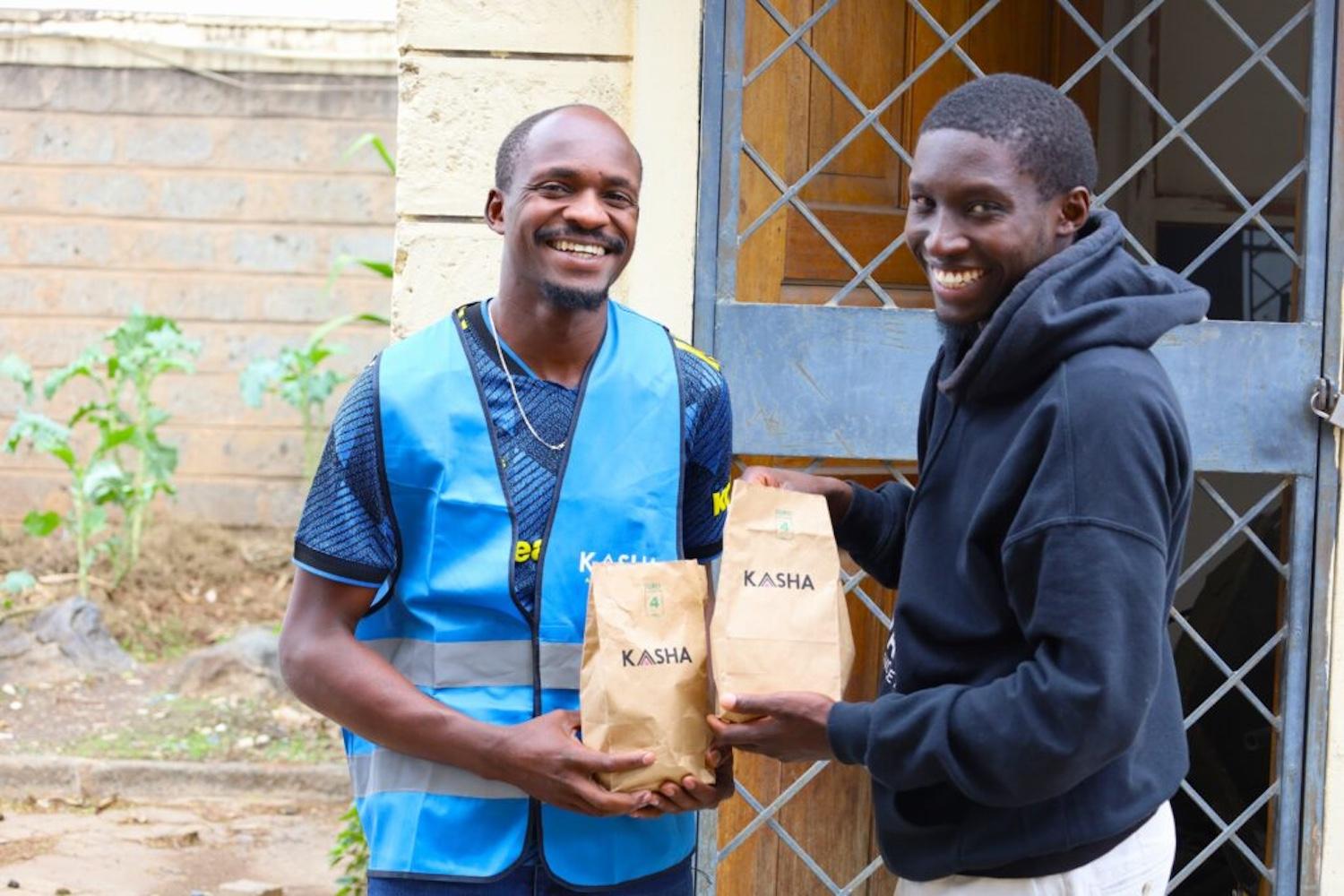
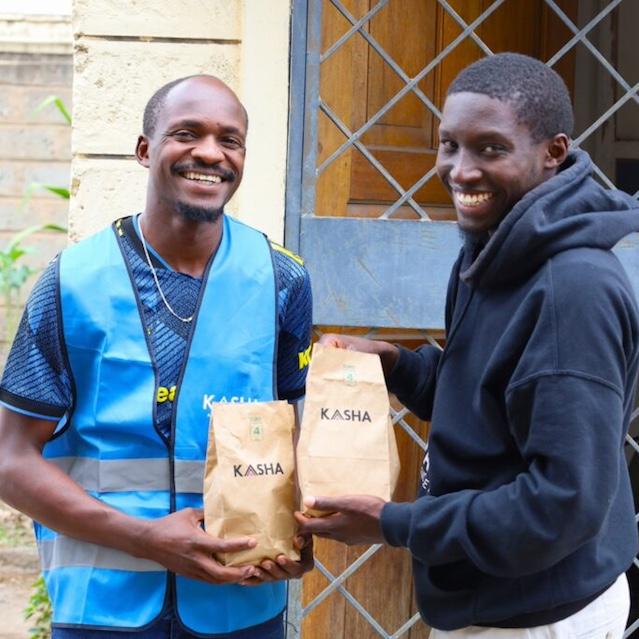
The Kasha platform is revolutionizing local health supply chains and healthcare access in East Africa by streamlining the purchase of medicines for consumers and facilitating remote restocking for pharmacies, clinics and hospitals to minimize stockouts. (Image courtesy of the Elton John Aids Foundation.)
When the COVID-19 pandemic hit, it shook the world and tested governments’ reactions to health crises. But it also struck vulnerable, underserved communities in Africa in an entirely different way. Across the continent, from bustling cities to smaller communities, the pandemic exposed the harsh realities of ineffective healthcare systems and supply chains. It resulted in uncertainties around access to critical health products, ranging from protective personal equipment to COVID-19 vaccines.
Today, Africa’s healthcare systems stand at a pivotal crossroad. Historic challenges of investor hesitation and operational hurdles collided with the stark realities exposed by the COVID-19 pandemic and were compounded by resulting debt crises. And supply chain failures highlighted the gaps in health product distribution and access.
Africa’s population is expected to grow by over 30 percent within the next 10 years, reaching 1.7 billion people by 2030, further highlighting the growing and urgent need for innovative solutions to boost healthcare access. With 50 percent of Africans living more than two hours away from the nearest health facility, the need for reliable, local, tech-enabled distribution systems to get healthcare products into the hands of patients has never been more important.
The rise of African healthtech innovators
As nations across Africa address the most efficient ways to deploy their limited health financing, local healthtech innovators present a unique opportunity to offer effective solutions to local challenges.
While tech giants dominate headlines, an emerging crop of leading innovators are quietly transforming Africa’s health supply chains by enabling greater, faster and safer access to health products. New, data-driven tech platforms to manage product stocks in clinics and pharmacies are leading the charge, promising to change how health products are stocked in outlets down to the last mile.
Kasha, a leading health access platform in East Africa, exemplifies this transformation. Kasha streamlines the purchase of medicines for consumers and facilitates remote restocking for pharmacies, clinics and hospitals to minimize stockouts. Launched in Rwanda, Kasha has expanded across East and South Africa, with plans to reach West and Central Africa by the end of 2024.
Beyond providing a reliable platform, Kasha empowers individuals with access to a wide range of health products and information, enabling informed choices. By serving underserved providers and diverting pharmacies from risky open drug markets, Kasha is revolutionizing local health supply chains and healthcare access.
The potential impact? Massive. Nearly 50,000 pharmacies, clinics and hospitals are now able to minimize the price and quality impacts of supply chain fragmentation. Instead, they source quality medicines straight from distributors and manufacturers thanks to tech-enabled systems for managing stocks. Conservatively, assuming these outlets serve only three patients daily, that's over 250,000 patients getting better access to health products and care. This isn't just innovation — it's a transformation of healthcare systems.
It doesn’t end there. Innovators offering track-and-trace technologies to follow the movement of health products and reduce the likelihood of counterfeits entering the supply chain are also reducing the threat of substandard and falsified health products. Innovators in medical drone delivery are advancing access for tens of thousands of residents in hard-to-reach communities who were historically cut off from health supply chains. And new analytics firms are applying data-driven approaches to supply chain planning and demand forecasting.
Unraveling the red tape
While they hold significant promise to improve access, healthtech innovators are caught in a web of local market challenges. Take drug distribution company, Remedial Health, which is serving 4,000 pharmacies, clinics and hospitals in Nigeria to improve access to genuine and affordable medicines. Having raised $12 million to offer digitally enabled procurement, Remedial Health is not just managing inventory but going further to offer financing solutions to local pharmacies. This minimizes the impact of cash flow constraints on product availability in pharmacies across the country.
In Egypt, Yodawy, which raised $16 million in a Series B funding, stretched beyond an online pharmacy. It evolved into a pharmacy benefits manager to ease access to health products via health insurance systems. Since its inception in 2018, it has processed 4 million prescriptions and partnered with 3,000 pharmacies and 15 insurance companies. In a country where health insurance coverage is historically low, driving greater adoption is crucial.
As they innovate, startups also face an uphill task of navigating long, bureaucratic sales cycles and a maze of international regulations to qualify for tenders with global donors and organizations. Unfortunately, global organizations focused on Africa’s supply chains are built to work with large, multinational companies and international organizations and do not procure tech-driven solutions — especially those developed by startups built in Africa.
It is time to adopt locally-developed, cost-effective, tech-driven solutions that can accelerate access. This isn’t just about sleeker systems, it’s about fostering a self-sustaining ecosystem of innovation that can respond nimbly to Africa’s unique needs. Global organizations working to strengthen Africa’s supply chains must intentionally shift from Western solutions, large multinationals, and international organizations to testing and procuring solutions from local health supply chain innovators.
It is time to leverage African solutions for African challenges.
Billie Eilish Fans Take a Bite out of Climate Change with Plant-Based Pledge


Billie Eilish performing at the Pukkelpop music festival in Hasselt, Belgium. (Image: Lars Crommelinck/Wikimedia Commons)
The music industry is not known for being a sustainability pioneer, but for the millions of Billie Eilish fans, there’s an opportunity to take a literal bite out of the climate change crisis. Concertgoers can take the Support and Feed pledge to eat one plant-based meal each day for 30 days.
“If 10,000 people at a concert take a pledge to eat one plant-based meal per day for 30 days, it would save 7 million gallons of water,” Maggie Baird, founder of Support and Feed and mother of Billie Eilish and her musician brother Finneas, said last month at Climate Week in New York City.
With an average attendance of 1.15 million people at Eilish concerts, the potential impact is considerable. The hope is that the awareness remains long after the concert. “We like to say that people come for Billie, but they stay for the planet,” Baird said.
Along with Support and Feed, Eilish and her team partner with Reverb, an environmental nonprofit that works with musicians, concerts and venues to green their events, while engaging fans to take environmental and social action. During Eilish’s Happier Than Ever tour, 133,500 fan actions were taken, including over 3,622 adopting the plant-based meal pledge, according to a Reverb report.
Riding on a music industry trend
While Eilish is just one performer, the plant-based pledge and other sustainability-focused aspects of her tours are part of a global trend in the music industry, in large part due to demand from fans. Some 69 percent of attendees at music festivals globally in 2024 favored nature-conscious events.
British hiphop legends Massive Attack offered entirely vegan catering at a festival in Bristol, England, in August. The event, Act 1.5, is named for the global temperature rise limit set in the Paris Climate Agreement.
This is a trend that Baird hoped to see for years, she said at the Nest Climate Campus event. Baird emphasized the link between food systems and climate change.
The vast majority of the world’s farmland is used for meat and dairy, with livestock accounting for 80 percent of agricultural use. A global shift to a mostly plant-based “flexitarian” diet could reduce greenhouse gas emissions and help restrict global warming to 1.5 degrees Celsius, according to a recent study from the Potsdam Institute for Climate Impact Research.
Putting equity on the menu
There are other overlooked dimensions to the challenge, Baird said. The shift to plant-based eating can also simultaneously tackle issues around health, access to nutritious food and equity. Two decades of studies underscore the health benefits associated with plant-based diets. Yet access to such food is often unavailable to marginalized communities. Community-based food systems can make a difference, as TriplePundit previously reported.
“I think of all the movements in the climate space, this may be the most overlooked, but in many ways, the most exciting and joy-filled one,” she said. “At Support and Feed we provide delicious, plant-based, restaurant-quality meals that anyone would be honored to eat, and at the same time helping the local economy because we are purchasing those meals from small community businesses.”
Since Support and Feed’s founding in Los Angeles, California, during the pandemic, the nonprofit has worked with over 80 community organizations, 150 volunteers, and supported over 60 local restaurants to deliver nearly 600,000 plant-based meals and pantry items.
It has expanded to Atlanta, Chicago, Detroit, Minneapolis, Nashville, New Orleans, New York City, Philadelphia, Hampton Roads and Washington D.C. It also has a presence in another 30 cities globally, including the United Kingdom, the European Union and Australia. It aims to have a footprint in cities that are most impacted by food insecurity and climate change.
Missing ingredient to the food system challenge
The intersectionality of the food system equity and climate crisis challenges is often missed by other food-focused organizations, Baird said. To remedy this, Support and Feed has three interconnected programs.
The first is a customized meal delivery program that addresses hunger in local communities by building cohorts with restaurants, grocers and food rescue partners. It also runs educational programs to shine a light on how food equity is tied to the climate crisis, and its disproportionate impact on low-income and historically marginalized communities. And a third program boosts food accessibility and wellness by helping children and youth learn to grow their own food and pollinator habitats.
“Food is about the climate crisis, it’s about equity, it’s about health — my passion is working at the intersection of all of those,” Baird said.
Awareness can make all the difference
Growing up in western Colorado, Baird became a plant-based eater who cared for the environment at a young age and raised her children with the same love for eating plants. “Food is my love language,” she said.
At the same time, Baird said she recognizes that not everyone grew up with plant-based eating or is motivated enough by climate and environmental issues to continue to eat that way.
While 73 percent of Americans think plant proteins are healthy — compared to just 39 percent who think animal proteins are healthy — only 32 percent say environmental sustainability is a serious factor in their food-buying decisions, according to a study by researchers at Virginia Tech. Part of that gap might be because it is not easy to know the environmental impact of food choices. Most of the survey respondents said if the information was easier to access, it would influence their decisions.
That is why education is such an important part of Support and Feed, Baird said. Like the information Eilish’s team shares with fans and the dedicated sustainability page on the Billie Eilish website inviting fans to take action in multiple ways.
“We’re really trying to break a lot of stereotypes and myths,” Baird said. “It’s not about taking something away from people. That just doesn’t fly with people. Food is culture, food is love, food is a lot of our identity and it just plain doesn’t work to come in and say, ‘You need to do this.’ So we try to meet people where they are. We ask people to start with one fully plant-based meal a day for 30 days. We offer recipes and guidance.”
It's a life mission that Baird said she finds satisfying on many levels. “We help people understand that if you take a little step, if you think about this each day and make substitutions, find some new foods you love, then all of us together make a massive impact,” she said. “You can be part of a solution, and it doesn't really have to hurt.”
The U.S. Faces a Persistent Gender Gap in EV Sales: Here's What Automakers Can Do About It


Former professional soccer player and gender equality activist Alex Scott in BMW's new Living with Electric campaign. (Image credit: BMW)
Global electric vehicle sales continue to break records, though the numbers are heavily dependent on regional differences. Sales increased by 22 percent so far this year for pure battery-electric vehicles, not counting hybrids, according to the energy transition data firm Rho Motion. Automakers also scored a new monthly record of 1.7 million EV sales in September, beating the previous peak of 1.55 million set in December 2023.
The record-breaking pace should help set aside doubts about the public’s willingness to invest in electric cars, at least on a global level, Charles Lester, data manager for Rho Motion, observed in an analysis published this week. However, he cautions that “the regional disparities are astonishing.” According to the firm's data, China alone accounted for more than half of global EV sales, while several European nations saw sales drop over recent years.
For the purposes of decarbonizing the global economy, the real question is how to re-boost momentum and accelerate the pace of electrification. That's unlikely to happen in the U.S. and other parts of the world until automakers finally close a stubbornly high gender gap.
The gender gap in U.S. electric vehicle sales
EV sales grew by a combined 10 percent in the U.S. and Canada this year, according to Rho Motion, which disappointed advocates who hoped for stronger growth. By way of comparison, 2013 EV sales nearly doubled over the previous year.
Auto industry observers often mention affordability when discussing why U.S. drivers are not rushing to buy electric vehicles. Access to a convenient, reliable network of public charging stations also frequently comes up.
To the extent that both of these factors have an outsized impact on female heads of household, it is surprising that fewer analysts mention gender in relation to EV sales. Nevertheless, gender makes a big difference.
Women purchased just 33 percent of the electric vehicles sold in the U.S. in the first six months of 2023, according to a frequently cited survey from the automotive sales company Edmunds. In contrast, women accounted for 41 percent of all U.S. auto sales during that time.
“Women could represent a key target demographic for automakers that haven’t put all of their eggs in the fully electric basket and are looking for a stepping stone before committing,” Edmunds noted.
Affordability is not the only factor
If affordability is responsible for the EV sales gender gap, that factor could fade in the near future. Goldman Sachs, for example, anticipates that a sharp drop in the cost of EV batteries will reduce the up-front cost of an electric car to parity with conventional cars by 2026. Depending on the cost of insurance and other circumstances, EVs can also provide a lifetime cost-of-ownership advantage. Maintenance costs are lower for EVs, and recharging a battery is less expensive than buying gas.
Still, women who are concerned about safety at public charging stations could remain reluctant to buy EVs. The national network of public stations is still in the early phases of buildout. Breakdowns and connectivity issues are frequent, and drivers can’t assume that a human attendant will be on site to help in an emergency.
With single women now accounting for more home ownership than single men, one solution is to make installing a home EV charging station as affordable and guesswork-free as possible.
Ford is among the automakers pursuing that path. In September, the company launched the Power Promise program aimed at incentivizing new electric vehicle buyers to install a home charging station. Homeowners also save money on home charging compared to using public stations, especially if their utility offers lower electricity rates for off-peak charging.
Similarly, the GM Energy branch of General Motors introduced the new Power Bank home energy storage system. Among other uses, homeowners can deploy the Power Bank to store extra electricity during off-peak hours when rates are low, and use it to recharge their EV as needed.
Help is on the way for renters, too
Overcoming the rental barrier is a much thornier problem. By and large, landlords have no motive to install expensive new electrical infrastructure, and tenants have no incentive to invest their own money in someone else’s property.
Still, 31 percent of U.S. households live in apartment buildings and other multi-family dwellings. Women renters, especially women of color, also experience more burdensome housing costs, further impeding any inclination to spend money on a charging station.
The U.S. startup 3V Infrastructure is among the charging station stakeholders spotting some low-hanging fruit in the rental area. The company plans to install Level 2 charging stations at buildings with 20 or more units, including hotels and other long-stay facilities as well as residential dwellings, with no up-front cost to the property owner or tenant. The charging stations also do not require property managers or superintendents to take on new responsibilities, as 3V takes care of ongoing operation, maintenance and repair costs.
Making public EV charging stations better
Making home EV charging more accessible to renters and homeowners is a good start. However, if automakers want to step up the pace of electric vehicle sales, they still need to provide the security of a safe, reliable public charging station network.
The initial approach to public charging was characterized by a bleak, featureless, charge-and-go approach. More recently, eight automakers — BMW, General Motors, Honda, Hyundai, Mercedes-Benz, Kia, Stellantis and Toyota — formed a joint venture called IONNA, aimed at populating the U.S. with purpose-built charging centers that offer the amenities of a modern roadside stop, including food and beverages, bathrooms, and comfortable lounge-style seating areas.
These improvements benefit everyone. But programs and messaging focused specifically on women could go further to help automakers close the EV sales gender gap. For example, last month BMW engaged the former professional soccer star and gender equality activist Alex Scott to lead the Living with Electric campaign focused on both home and public EV charging.
While the campaign features the new BMW iX2 crossover SUV, which is not available in the U.S., it offers a good model for U.S. automakers to follow if they are serious about making electric vehicles more appealing to women.
Why Researchers are Reinventing the Toilet
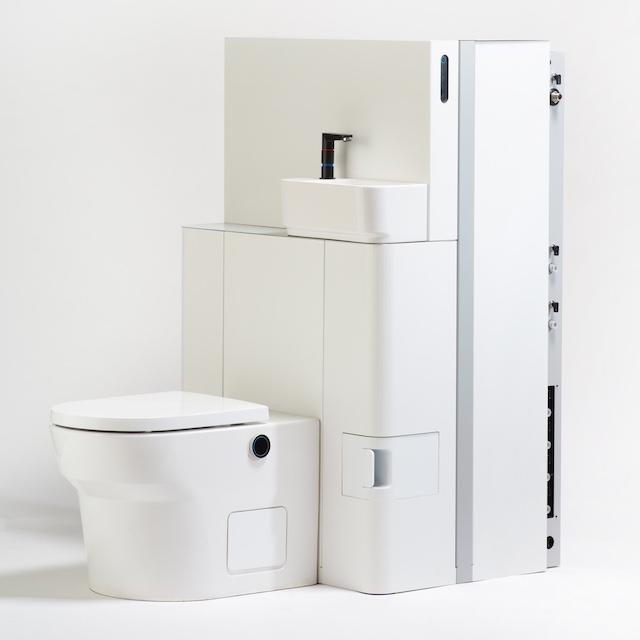
Researchers designing the Generation Two Reinvented Toilet (G2RT). (Image courtesy of Georgia Institute of Technology.)
Researchers at the Georgia Institute of Technology completely reinvented the modern toilet. Together with LIXIL, they’re hoping to change how we manage human waste and sanitation.
“For millennia, humans have put waste into water and just kind of flushed it downstream,” Shannon Yee, associate professor of mechanical engineering at the Georgia Institute of Technology and developer of the Generation Two Reinvented Toilet (G2RT) told TriplePundit. “We're looking at a major shift.”
Re-envisioning universal sanitation
Almost half of the global population — 46 percent, or 3.6 billion people — lives in an area where wastewater is not safely treated. As such, 44 percent of the domestic wastewater that was returned to the environment in 2020 did not go through proper treatment. This puts the lives and health of humans and animals at risk as bacteria- and virus-laden wastewater ends up in rivers, lakes, oceans and drinking water — causing diseases like cholera, typhoid and polio to spread.
In other cases, inclement weather can cause sewage treatment systems to overflow. Anyone who has lived along the northern part of the Willamette River in Oregon, for example, is familiar with frequent sewage spills. On December 8, 2023, the city of Salem released 3.15 million gallons of combined sewage and rainwater into the river after heavy rainfall overburdened the system. That problem is only going to get worse as the climate crisis entrenches further.
“We know the susceptibility of our infrastructure in the face of climate change,” Yee said. “Treatment plants will flood because they're at low-lying areas [and] in drought-ridden areas.”
So instead of investing in systems that will fail, it makes more sense to change how waste treatment is handled in the first place, which is the goal with the G2RT.
“It's about how do we responsibly treat waste on site?” Yee said of the reinvented toilet. “That type of colossal shift, I think, is now enabled.”

The G2RT as an appliance
The G2RT is an off-grid toilet designed to be used in just about any setting, from modern, urban homes to rural areas where traditional toilets have yet to make inroads, public places, and even emergency response and crisis situations. Since the toilet is self-contained and breaks down waste on-site, it doesn’t need plumbing to connect it to water or sewage. That on-site treatment eliminates an enormous amount of waste, turning it into clean water that can be safely discharged into the environment or reused to flush the toilet and a negligible amount of ash, Yee said.
Erin McCusker, senior vice president at the water and housing products company LIXIL, likened the G2RT to an appliance. LIXIL is licensed to hone the new toilet and get it to market.
“This comes down to the acceptance of these types of technologies,” she said, referring to the wafers of waste produced by using the toilet that people may not be comfortable with right away. “Scientifically, this is possible. We've got that validation, but now it's like, ‘Are consumers going to trust this in their home?’”
But can it be maintained the same as any other home appliance? McCusker thinks so. “The idea is, ideally, this is a home appliance that someone could repair, replace a filter, maintain, as we do our washing machines, for example,” she said. “But in the end, you will need some skilled labor to be able to do some additional maintenance or to troubleshoot.”
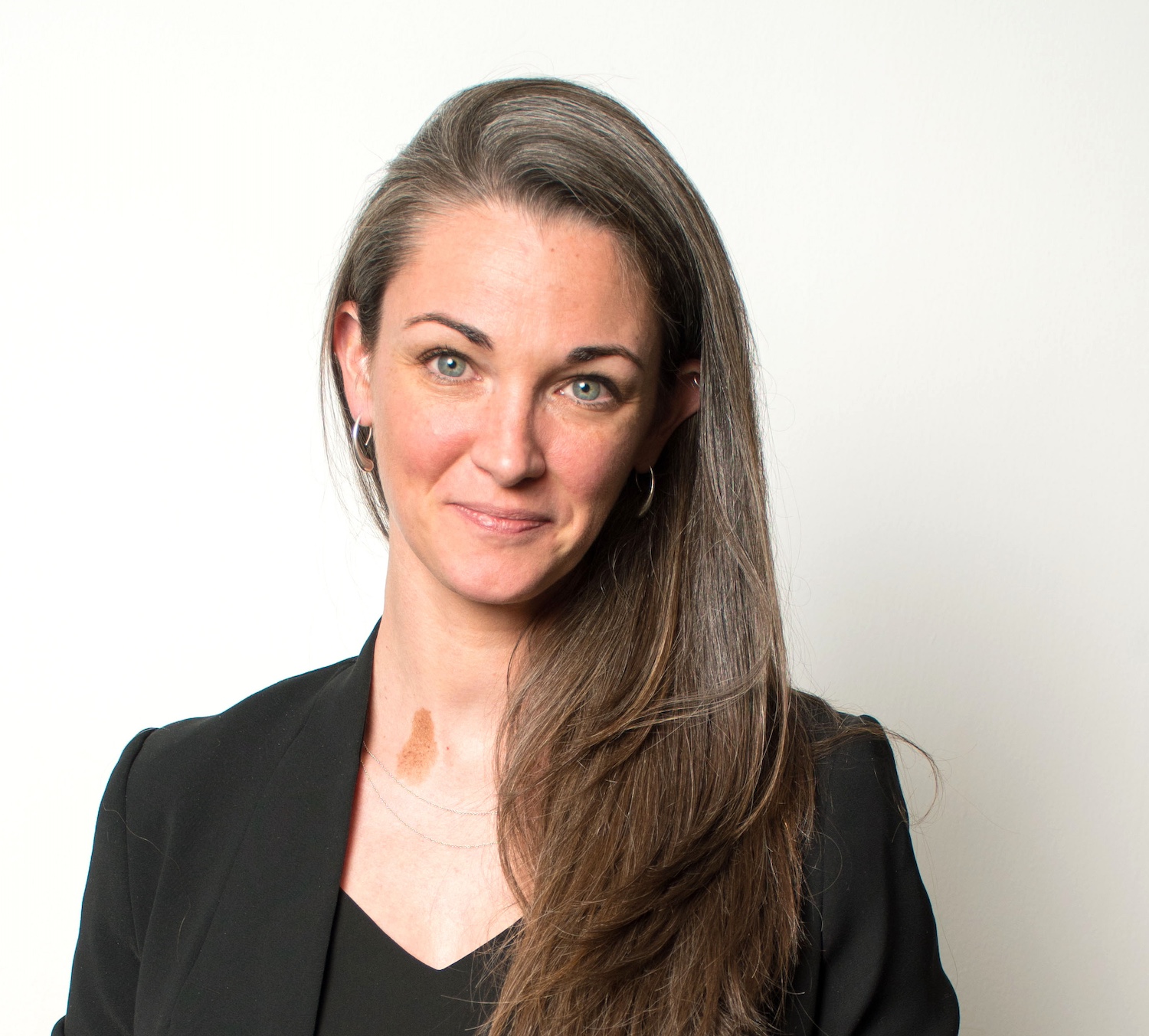
Ongoing testing to ensure reliability
The reinvented toilet has undergone numerous prototype versions and pilots to ensure its reliability and determine its repair schedule, Yee said. The team tested four different versions between trials in the lab and in homes in South Africa and India.
“Prototype testing and testing with actual users becomes the most critical stage of this,” McCusker said. “The sooner at LIXIL we can get it out of the lab and build prototypes and actually start testing, is when we’re really going to learn more [and] understand the long-term usage. That's a really high priority for us, particularly over this next year.”
But LIXIL isn’t rushing the toilet to market. It will still be a couple of years before the product is robust enough to meet the criteria needed for production, she said.
“Oftentimes people have the expectation that as soon as a technology is invented, it works perfectly and can last 30 years, but in reality, that's never been the case. It took us 100 years to get the automobile to the reliability it has now,” Yee said. “We're at the early stages of that now with the toilet. It's going to take some time.”

In the meantime, LIXIL is partnering with communities in a rural, agricultural region in western Alabama where lack of sanitation infrastructure and aging septic tanks led to an ongoing sewage crisis. The need there is so great that McCusker said it’s worth giving residents access to the new toilet even though it hasn’t been perfected yet.
Regulation is the biggest challenge
“There’s very few, if any, places it’s legally allowed to be installed,” McCusker said. “How do we actually change mindset, regulation, policy around on-site treatment and on-site reuse that can enable these types of technologies to be installed.”
Yee agreed. “There are more challenges beyond the technology than there are with the technology at this point,” he said.
Those challenges include social acceptance, the high initial cost of the toilet, and a need for resources to get it out there, McCusker said. The G2RT will likely be rolled out in higher-income countries first. Then as production increases and the price drops, it will become a more feasible option for communities in lower-income countries.
Safe elimination and sanitation are a basic human right, and without it, people around the world are suffering. This technology has the potential to make a huge difference once social, financial and legal hurdles are cleared.
“I see it really helping to address some of the equity issues, social justice, environmental justice, poverty issues surrounding sanitation, but I also see it really addressing public health,” Yee said. “I look at [COVID-19] and consider how lucky we were that it was mostly a respiratory transmission and not oral-fecal transmission because it could have been a lot worse. If we can really isolate waste on site and treat it, it really opens up tremendous opportunities for combating future pandemics and disease.”
In Higher Education’s Efforts to Decarbonize, New Jersey Offers a National Model
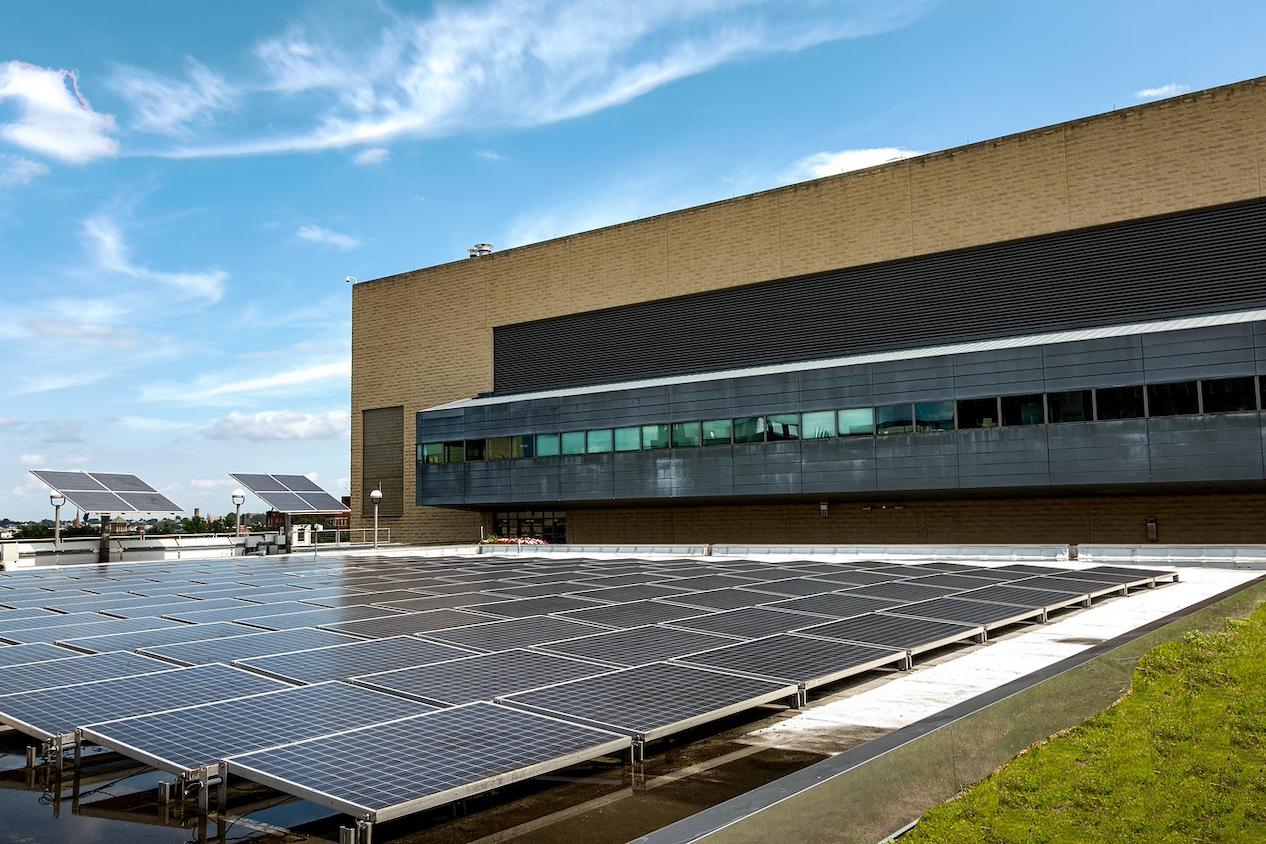
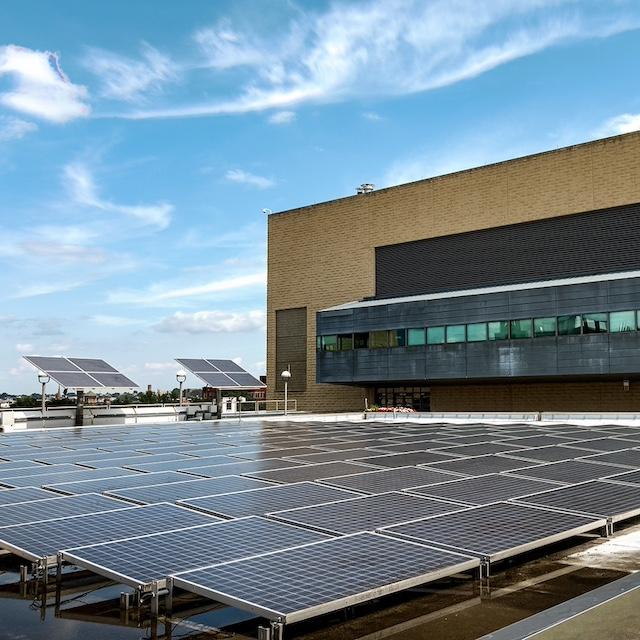
Solar panels on the New Jersey Institute of Technology campus. (Image courtesy of the New Jersey Institute of Technology.)
In the United States, institutions of higher education are champions and facilitators of decarbonization research: They foster the next generation of climate scientists, build innovative technologies, and educate industry and the general public. Equally important, universities can become effective champions of decarbonizing their campuses.
College campuses are amongst some of the largest energy users in the country. Academic institutions, especially those that rely on large-scale computational systems and industrial machinery, still face many challenges when implementing decarbonization programs and curbing their carbon emissions.
Given their energy usage, functioning as small-scale cities, colleges and universities have a unique opportunity to act as natural test beds for a multitude of decarbonization strategies and provide case studies for peer institutions and larger citywide and statewide communities. Campuses are comprised of multiple different building types — dormitories, offices, classrooms — where the lessons learned can be applied to most of the nation’s residential and commercial building stock.
New Jersey colleges are building a blueprint for how academic institutions, alongside regional energy regulatory bodies, can collaborate across the country to make progress on shared carbon emission goals.
While many institutions have similarly committed to taking action on the climate crisis and achieving net zero emissions, it’s important to recognize there is no one-size-fits-all solution. Depending on the type of HVAC systems in place, each university will face unique barriers when it comes to implementation. Several common challenges include a lack of funding for decarbonization initiatives, a lack of experience in measuring and demonstrating the cost-benefit of campus decarbonization, and at some institutions, there may be a lack of stakeholder buy-in from top decision-makers or staff who are unaware of available incentive programs.
Thus far, the most significant barrier to campus decarbonization is the absence of reliable roadmaps for strategic planning. Here, knowledge sharing becomes a critical way to pool educational resources and proven experiences of how to design and implement a cohesive decarbonization strategy. Decarbonization policies become significantly more effective with access to academic resources, like the New Jersey Clean Energy Learning Center.
In New Jersey, new pathways for education and collaboration are being built through the Campus Consortium for Decarbonization, an initiative funded by the New Jersey Board of Public Utilities and the New Jersey Clean Energy Program, housed at the New Jersey Institute of Technology. The state of New Jersey also benefits from the New Jersey Higher Education Partnership for Sustainability, a volunteer organization housed at Rutgers University that focuses on student engagement, knowledge sharing and workforce development. It’s worth noting that most states don’t have these kinds of consortia.
The Campus Consortium for Decarbonization was organized to share knowledge across New Jersey campuses working on reducing their carbon footprint. Academic institutions gather to share funding strategies and practical approaches to decarbonization and collaborate to develop innovative solutions. For example, at a recent consortium event, Princeton University shared the use of cutting-edge electric heat pumps to supplement its low-temperature water heating system, encouraging others to gauge the feasibility of adopting heat pumps and introducing similar thermal storage and geo-exchange programs.
New Jersey colleges and universities are also working together to share insights on installing electric vehicle chargers, heat and power systems, energy efficiency, beneficial electrification and carbon storage solutions. And they are looking at the feasibility of sending all organic waste to processing facilities, where it can be converted into renewable natural gas and used to power vehicle fleets or as carbon credits. Later this year, universities will explore the viability of carbon sequestration.
Throughout this work, a recurring question we ask ourselves is: How do we prepare our campuses to be available 24/7 for students, faculty and staff, while also reaching ambitious renewable energy goals? Consortium partners are working together to coordinate assessments and responses to tackle these questions. For example, the New Jersey Institute of Technology will host a workshop alongside Rutgers University and Kean University with the goal of accurately calculating their respective transportation footprints — a major part of a university’s overall emissions — to find ways to reduce them.
Since its inception, one of the consortium's primary concerns is the practicality of financing and tailoring these solutions. In New Jersey, state funding has been essential, especially through the Large Energy Users Program Higher Education Decarbonization Pilot, which provides up to $5 million for universities with diversified decarbonization plans.
Yet, increased federal funding will be necessary to support regional efforts and deploy more solutions at scale. The Environmental Protection Agency, the federal agency responsible for maintaining environmental standards and issuing nearly half of its overall budget in grants to that end, divides the country up into 10 regions. Each represent a source of additional funding that could potentially be unlocked for campuses nationwide.
Another source of federal funds, tax credits from 2022’s Inflation Reduction Act, are allowing institutions to install renewable energy and make their campuses more vibrant. Regardless of the agency or initiative, we believe that directing federal funding to a well-structured consortium of colleges allows for more efficient utilization than funding marked for individual institutions.
This much is clear: If a group of large energy users makes simultaneous progress on decarbonization goals, the overall impact can be significant. New Jersey’s higher education community, and its active cooperation with the state’s public utilities authority, serve as a replicable model for how academic and regulatory communities can collaborate across the country. If America’s colleges want to practice what they teach, this kind of collaboration is not merely helpful — it’s a necessity.
Never Give Up on Girls in Crisis: How We Realize the Promise of the International Day of the Girl

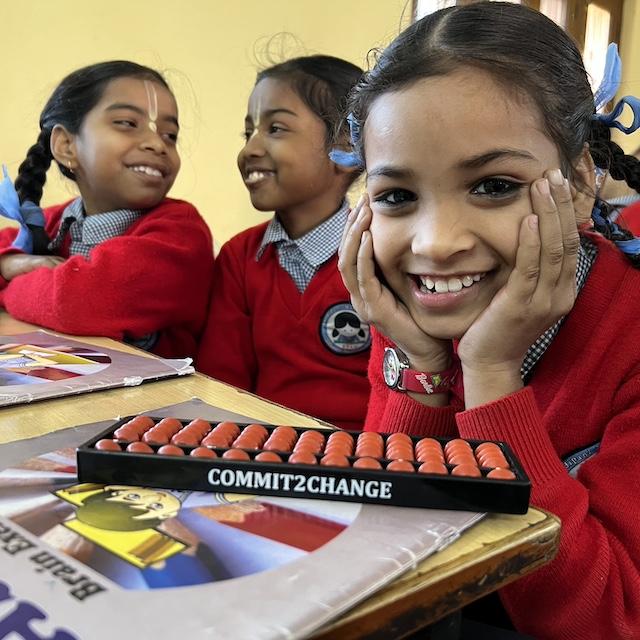
Students in a Commit2Change vedics math classroom at a partner site run by the nonprofit Food for Life Vrindavan in Vrindavan, India. (Image courtesy of Commit2Change.)
On the outskirts of Hyderabad, India, Diya lives at the Center for Social Service (CSS), a nonprofit that helps abandoned girls. Her journey there has been hard fought.
Born in a small village in Andhra Pradesh, Diya’s mother died when she was one, and she was abandoned by her father. Living at her uncle’s house she faced cruelty. At the age of eight, her uncle sent Diya to the city of Hyderabad, where her uncle told her she would be living there as a maid and babysitter to his family. He told her to behave.
Only Diya’s courage and help from a family member brought her to CSS, where she restarted her education.
October 11th is the International Day of the Girl, the annual observance of issues faced by girls worldwide. The theme this year is “vision for the future,” reflecting a hope that we can accelerate progress “towards a future in which every girl can fulfill her potential.”
But for too many girls, that future is still far out of reach. Today nearly 30 million girls are displaced and 110 million girls are at risk of child marriage. One in five girls worldwide never finish elementary school, and almost half never complete secondary education. Nearly 90 percent of adolescent girls and young women in low-income countries do not use the internet. In India alone, a staggering 29.4 million girls like Diya were orphaned or abandoned, based on UNICEF’s most recent survey.
These crises — poverty, displacement, abandonment, abuse, bias and more — are endemic to many parts of the world. They imperil our shared future, and they are putting the ambitious goals of the International Day of the Girl out of reach.
In 2010, inspired by girls we met in orphanages and residential centers across India, we started an organization designed to build that future where every girl can fulfill her potential. Commit2Change works with vulnerable, school-aged girls in India and South Asia to empower them with critical education and life skills. In 14 years, with more than 8,500 girls helped by our programs, we’ve learned two big lessons about how to make progress real for girls — lessons we hope will be instructive for global leaders, philanthropists and educators alike.
The first: You can’t give up on girls in crisis. Ever.
We believe that empowering girls through education is the key to breaking the cycle of poverty and discrimination. Many of the girls we serve come from backgrounds of extreme hardship, often cast away from their families due to poverty or gender discrimination. They face additional barriers such as domestic violence and negative family environments, which can severely impact their self-worth and ability to make independent choices.
Time and time and time again, we’ve been moved by the determination and bravery of these girls. From a young girl with HIV abandoned by her parents that Sumana met during a recent visit to the Little Flowers Children’s Home in Bangalore to the conversation Sejal’s daughters had with girls in partner orphanages, the girls we serve are fiercely determined to get educated and make something of their lives.
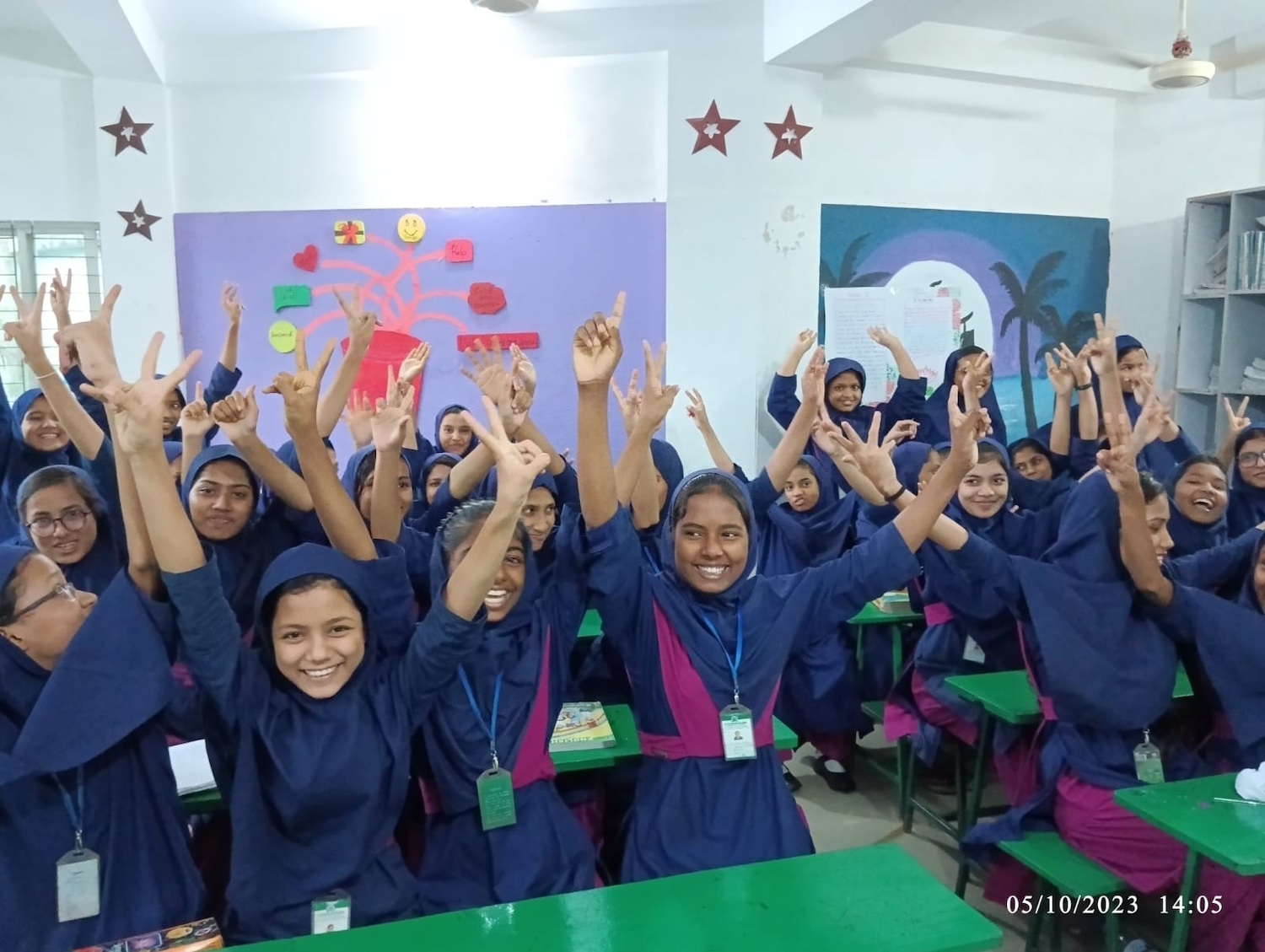
The second lesson: Empowerment works.
We take a holistic approach to education, going beyond traditional education to include life skills, digital literacy and mental wellness. We focus on the "4C's" — confidence, critical thinking, creativity and communication skills — which are integrated into our curricula and supported through social and emotional counseling.
This approach is meaningful for girls from troubled backgrounds. But empowerment is critical for all girls because it elevates learning. By incorporating life skills such as vedic math, digital literacy and STEM (science, technology, engineering and mathematics) education, we’re creating a next generation talent pool. This is good for girls, but it also gets us all closer to achieving multiple Sustainable Development Goals, from no poverty and equality to innovation and economic growth.
This comprehensive model starts in early education and extends through high school, ensuring that girls are empowered to complete university or vocational school and become competitive in the job market. Programming includes leading-edge tech education, from robotic kits and STEM labs to assistive technologies. In South Asia today, only one in four STEM students in college and university are women. Together, we can change that.
Fresh data shows the remarkable progress of this holistic model: a 75 percent boost in math scores across grades one through eight, and a 61 percent improvement in math scores across grades three through eight. Sixty percent of students achieved English proficiency, compared to only 25 percent locally. Students' scores jumped 15 to 30 points in math and science. And there was a remarkable 98 percent success rate in helping enrolled girls stay in school.

This model is working, and it's scalable. As more partners join on, we’ve expanded from India to the wider region, helping exponentially more girls each year who come from increasingly varied and complex situations of crisis.
By Diya’s sixteenth birthday, she’d not gone back to her village since she came into our program and refused contact with her abusive family. When you hear her story, you might not think that this young girl smiling back at you has been through so much trauma, but she is strong beyond her years. Today Diya is studying on a science track in school. Her hope is to become a doctor so that one day she can help people like her sister live a better life.
This is the lesson for International Day of the Girl. Never, ever give up on a girl in crisis. And this is our charge across sectors and across borders: provide girls with the education and empowerment they need to overcome adversity and achieve their dreams. That’s a powerful “vision for the future,” for girls and for us all.
The Commit2Change student’s name was changed to protect her privacy.